We are in the heart of this year’s monsoons but it’s been raining new Mercedes-Benzs for a whole lot longer. The German carmaker has been on an intense drive to revamp its product portfolio with new launches, and where it’s not altogether replaced older models with newer versions, it has thoroughly updated existing ones. There’s also been a whole battery of AMGs that have made their way to India. But, it’s the Selenite Grey model you see here that finally completes the Mercedes range. It’s the much-awaited GLC that plugs the gap between the small GLA crossover and the larger GLE SUV. But mere participation in the mid-size luxury SUV segment doesn’t guarantee Mercedes success. Alternatives are plenty and include, though are not restricted to, the other duo here.
The Discovery Sport, itself one of the newest entries in the market, brings some traditional Land Rover flavour to the segment, with the added versatility of a seven-seat option. Then there’s one of our long-time favourites – the BMW X3. It’s been around for a while but has been the recipient of a facelift and a new 2.0-litre diesel engine along the way. While the Merc and Land Rover are also available with petrol engines, it’s their more popular diesel versions we’ve considered here. Also of note is that the Discovery Sport is in 150hp TD4 spec rather than the 190hp SD4 form; the latter is unduly expensive and doesn’t bring with it commensurate benefits in performance for the additional outlay over the TD4. What this also means is pricing for the three SUVs is within the same bracket. The GLC 220 d Edition 1 costs Rs 55.74 lakh (ex-showroom, Delhi), the Discovery Sport TD4 HSE comes in at Rs 55.31 lakh (for the five-seat version) and the BMW X1 xDrive20 in xLine trim is yours for a slightly lower Rs 53.9 lakh. However, some states levy higher registration charges for imported cars and this implies you could end up paying the most for a GLC, at least until the time Mercedes starts local assembly in India.
Now that you have some perspective, let’s get straight to it and find out which is the best mid-size luxury SUV you can buy today.
Scratching the surface
There’s really not all that much difference between these SUVs in length and width, but the Discovery Sport is the tallest while the Merc’s roof is closest to the ground. In fact, viewed head-on, the GLC’s look can be likened to that of a significantly raised C-class. The two do share their basic underpinnings and carry the same design language, so similarities are only to be expected. What Mercedes has done really well though is translate its new-age, youthful styling treatment on to what is a fairly conventional SUV shape. The brawny look of the protruding grille, for instance, is balanced by the soft contours of the headlights. And while there is a prominent slash at the doors, it doesn’t look overdone. Even the rear end with its spread-out tail-lamps is attractive. There is a tasteful use of chrome on the GLC too, and in all, the look is sporty yet graceful.

The Discovery Sport, on the other hand, has a very rugged air about it. You won’t find any flashy cuts and creases on the body, rather, it’s all about clean lines and a chunky, robust look. It’s unabashedly a Land Rover, so it’s designed to look at home in the mud, not Madrid. The family look at the front works well, while the thick C-pillar and wrap-around appearance of the rear windshield add distinction to the design. If there’s a spoiler, it’s that the 17-inch wheels look too small under the large wheel arches.
Like the GLC, 18-inch rims are standard fit on the X3. The Bimmer is attractive in its own right, but perhaps since we’ve seen the shape for long now, it doesn’t appear as special as its rivals today. 2014’s update did bring a new face with larger headlights that fuse with the kidney grille and this helps link the X3 to the latest BMWs. The X3’s rear end is smart and the tailgate opens to reveal a sizeable luggage bay. However, go for the optional spare wheel (the X3 uses run-flat tyres, remember), as you must, and you’ll see useable space reduce significantly. That’s a complaint with the GLC too; the space-saver tyre that sits on the boot floor, rather than under it, ironically eats up most of the space. For what it’s worth, the GLC is the only one here with an electric boot shut function. The Discovery Sport has the biggest boot of this trio, and thankfully, also comes with a dedicated recess for the spare tyre. An important distinction to note between the five- and seven-seat versions of the Discovery Sport is that while the former comes with a full-size spare tyre, the latter gets only a space saver. It’s something to keep in mind when deciding on the right version of the Discovery Sport for your needs.
Personality test
It’s quite amazing how these SUVs’ outer appearances are so closely mirrored in key facets of their respective driving experiences. Take the case of the GLC. For all its elegance, you’d expect the Merc to be quiet and relaxing to drive and that’s exactly what it’s like. Road and wind noise are the lowest here, there’s a high degree of plushness in the way it tackles low-speed bumps and even the steering that works with a very Mercedes-typical fluidity, is easy to use. The GLC is pleasant around the corners as well, and the 2.1-litre engine too, is in keeping with the Merc’s overall character. That is to say, it’s friendly for average city and highway use but stands out most for its refinement; the latter bit helped in no small measure by the nine-speed gearbox’s eagerness to shift to a higher gear in the interest of efficiency. Just don’t expect the powertrain to get your pulse racing. Peak power is a middle-of-the-road 170hp and even with pedal to the metal in the sportiest of its five driving modes (Sport+), you won’t get pushed back into your seat at any point. When you are in the mood, you can downshift fairly aggressively via the paddle shifters but, given the linearity of the power delivery, there’s no big performance gain in doing so. But, though it may not feel so, the GLC is the quickest of the three SUVs with a 0-100kph time of 8.56 seconds.
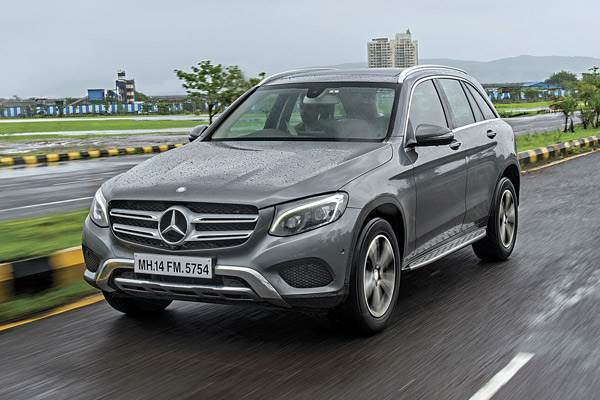
Then we have the X3. It may be marginally slower than the Merc but true to its racy red paint job, it is also the SUV you’d most want to drive with verve. Yes, there is some un-BMW-like slackness at the straight-ahead position, but the X3’s otherwise quick steering and sharp turn-in make it come alive around the bends. The X3 also gives drivers the greatest control of how sporty they want their SUV to feel; it’s the only one here that alters damper stiffness in the driving modes. That’s not to sideline the X3’s powertrain. The BMW’s 190hp 2.0-litre engine is the most powerful here and feels so too. There’s a strong mid-range and you can wind the engine all the way to 5,000rpm before the electronics kick in and upshift on the eight-speed gearbox. The transmission is also responsive to tugs at the beautifully sculpted gear lever, but it’s a shame the sporty X3 doesn’t get paddle shifters. Those looking for a relaxed daily drive, on the other hand, will have to contend with the constant buzz from the engine and relatively higher levels of road and wind noise too. However, we were pleasantly surprised by the softness with which the X3 smoothened even crater-sized potholes taken at low speeds.
Coming to the Discovery Sport, it has the firmest low-speed ride, the engine grumbles a fair bit at low speeds, and it’s the slowest by a huge margin. But these facets are unlikely to matter as much to those who want their mid-size luxury SUV to take them into the wild. The Discovery Sport is the most capable of these all-wheel-drive-equipped SUVs off-road and that is its calling card. True, the GLC also comes with specific off-road driving modes, but it is the Discovery Sport and its Terrain Response System (it alters steering, throttle, braking and all-wheel-drive system characteristics)that imparts the most confidence and will take you the furthest in the rough stuff even on the stock all-season tyres. Away from the streams it can cross (it can wade through 600mm-deep water) and back on tarmac firma, the Discovery Sport has its pluses and minuses. The 2.2-litre diesel engine performs like the old engine it is and doesn’t excite like a modern diesel should. Power delivery, though, is very linear and for average use, the 150hp unit gets the job done. The Disco’s nine-speed gearbox also works well but, at times, the transition from one gear to the next isn’t as smooth as it should be. Around the bends, the Discovery Sport doesn’t come across as a sharp tool either but handling is neat and tidy with a very likeable old-school heft to the steering. In general, there’s a great feeling of control at the helm. The well-damped, high-speed ride is another Discovery highlight. In comparison, the softer set-up Merc and BMW don’t feel as settled at triple-digit speeds.

When it’s time to park, you’ll be glad to know all these SUVs come with reverse cameras, though the Discovery’s unit is down on megapixels to the GLC and X3’s. However, the Discovery and GLC go one up on the X3 with their high-tech park assist features. The system automatically steers the SUV into a parallel or perpendicular parking spot. All the driver has to do is modulate the throttle and brakes. The only catch is these systems don’t always manage to detect vacant parking spots.
Luxury quotient
Whatever the exterior environment these SUVs are expected to perform in, their primary purpose, at least in India, is to cocoon occupants in luxury. And it is here that the GLC races ahead of the other two. The cabin is identical to the C-class’ in look and feel, so what you get is a modern-looking dashboard, brilliant quality and superb attention to detail. There is a richness to almost all surfaces and even the smallest of buttons look like they’ve been crafted with care. The GLC with us is the Edition 1 launch version, so it is well loaded and even gets goodies like electric steering adjust and full electric adjust for the richly trimmed and comfy front seats, including for thigh support. In that way, it’s a bit surprising that Mercedes hasn’t given the GLC a larger centre screen. The 7.0-inch screen also doesn’t look well integrated with the dash, a complaint we’ve had with the newer lot of Mercs, and the Comand system it runs isn’t the most intuitive to use either. But see the cabin in its totality and you’ll no doubt feel you’ve got the most for your money here.
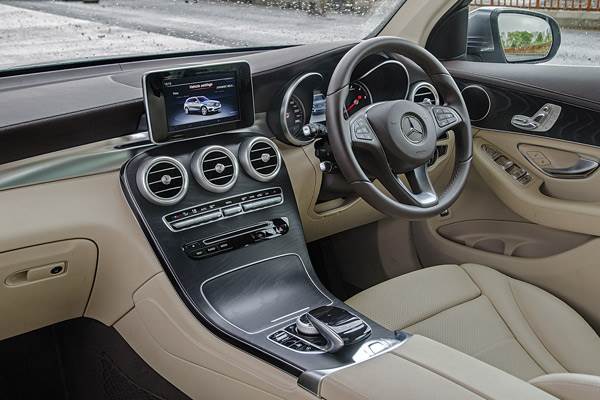
The Discovery Sport’s cabin isn’t as luxurious but it feels like a Land Rover through and through; the placement of the window switches on the window sill, for one, is trademark Land Rover. Straight lines and simple surfaces dominate the look inside and if not particularly rich, the cabin does feel long lasting. The reassuringly solid thunk on door shut also makes the Discovery feel as if it’s made of heavier grade metal than the other two. Nice bits in the Discovery include the climate-control knobs with their integrated temperature screens, and the way the rotary gear selector rises when you switch the ignition on. Not so nice are the simple instruments and the low-res digital screen that sits between them. The Discovery is the only SUV here to feature a proper touchscreen infotainment system and it is a fairly nice system to use; just don’t expect it to function with the same slickness as your smartphone or tablet. It’s also a bit of a stretch to use on the go. Behind the chunky steering wheel, though, it is the Discovery Sport that most gives the feel of piloting an SUV. You sit relatively high up and get the best view out too.
The X3’s cabin is about as low as the GLC’s but thanks to the Bimmer’s lower dash, outside visibility is better. Unfortunately, the view inside the cabin isn’t quite as special. The dashboard is neat, user-friendly and very BMW, but it looks all too familiar today. Also, though quality is good with soft-touch materials covering the bulk of the cabin, bits like the control stalks and power window buttons seem merely functional, especially when seen in light of what you get on the Merc. The steering also feels a bit too thick-rimmed and the front seats could do with a longer base as well. That said, the BMW fights back with the nicest infotainment system. The iDrive system and its shortcut buttons are the easiest to get the hang of.
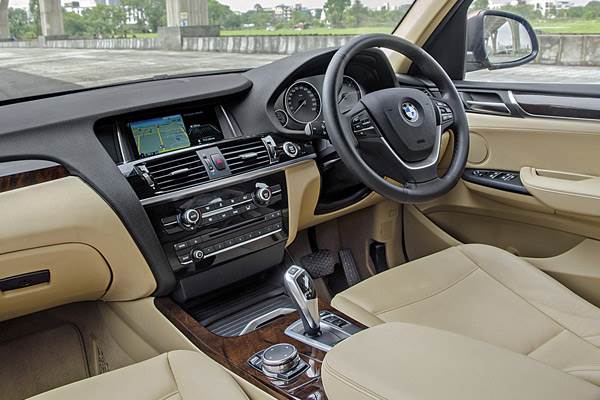
All three SUVs offer plenty of legroom for rear-seat passengers and their panoramic sunroofs only enhance the feeling of space inside. Again, it is the GLC that feels the most luxurious at the rear. The seat has just the right amount of cushioning and there’s lots of space to stretch out. Unfortunately, the seat base is short and this leaves an occupant’s legs unsupported. Still, it’s a bigger issue on the X3 whose rear seat is low and seats passengers in a distinctly knees-up seating position. Disco Sport rear-seat passengers are quite well taken care of, a slight shortage of thigh support notwithstanding, and what helps comfort a wee bit is the option to adjust backrest angle. The Discovery’s rear seat is also the best at accommodating three passengers. Seven-seat Discoverys offer the same level of middle-row comfort, but access to the third row is awkward and space is limited. The seven-seat option costs an added Rs 1.5 lakh and frankly is fine for occasional use at the very best.
The final countdown
To end with an analogy, the GLC, Discovery Sport and X3 are akin to Ballys loafers, Caterpillar boots and Puma driving shoes, respectively. That is to say, the GLC’s core competency is its luxury feel, the Discovery’s is its utility and the X3’s is its sportiness.
But sporty and exciting as the X3 is, it’s not the best-rounded package. The engine is a touch gruff by latest standards, rear-seat comfort is average and the cabin just doesn’t look all that special today. The X3 remains the most rewarding to drive on the right roads and at least for self-drive buyers, that’s the reason to consider one. Discovery Sport buyers buy into a very different experience. Given its prowess off-road but lack of fizz on-road, the Land Rover is more about discovery than sport. It does feel solidly put together and is the most SUV-like too and that’s what makes it rather endearing. Still, there’s always a sense that it could have been better with the right engine. Thing is, Land Rover sells the Sport with a newer 2.0-litre engine abroad, so it’s disappointing to know Indian buyers have to make do with an inferior, older engine.
Add up the points then, and it’s the GLC that comes up on top. While not as exciting as the X3 or as capable off-road as the Discovery Sport, the GLC more than makes up by delivering in the areas that matter for the majority of luxury SUV buyers. It’s nice to drive, its cabin is beautifully turned-out and at least in Edition 1 form, it’s well equipped. The high levels of refinement just underscore the fact that this is an SUV that seeks to charm owners for the luxury it offers.
Mercedes may have taken its time to enter the mid-size luxury SUV segment, but it seems to have got the formula right the first time around.
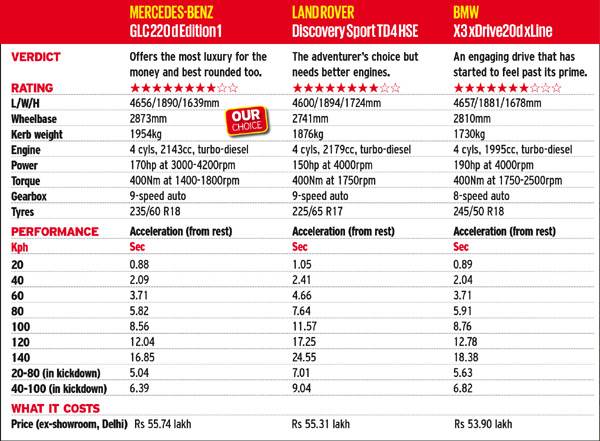

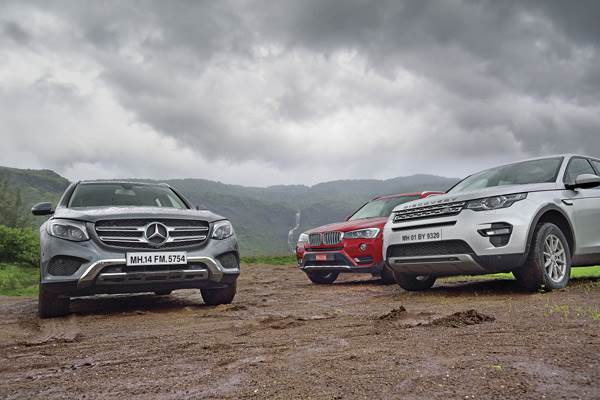
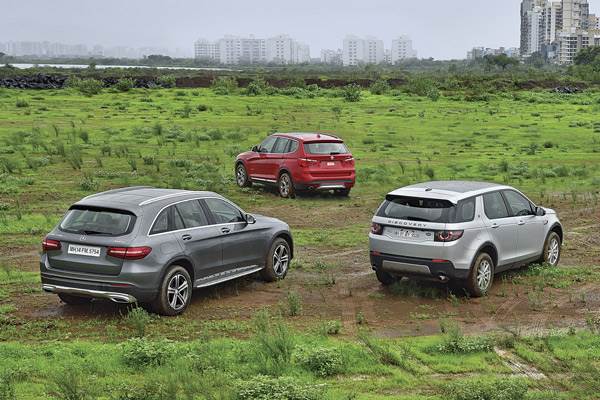
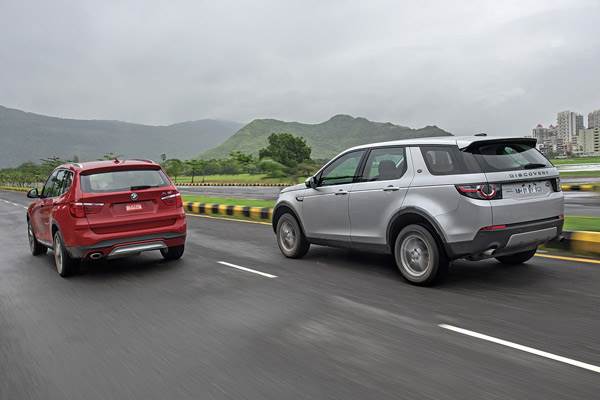
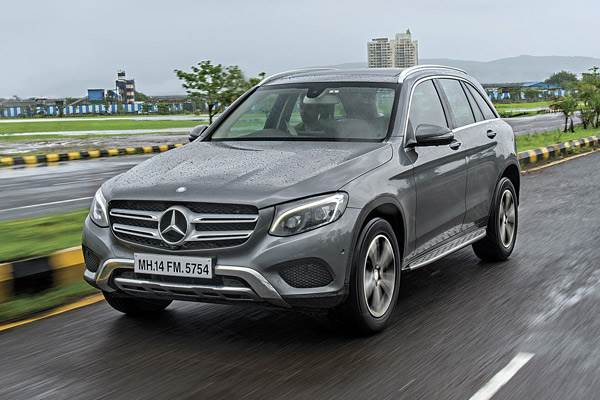


Comments
Member Login
Personal Details
No comments yet. Be the first to comment.